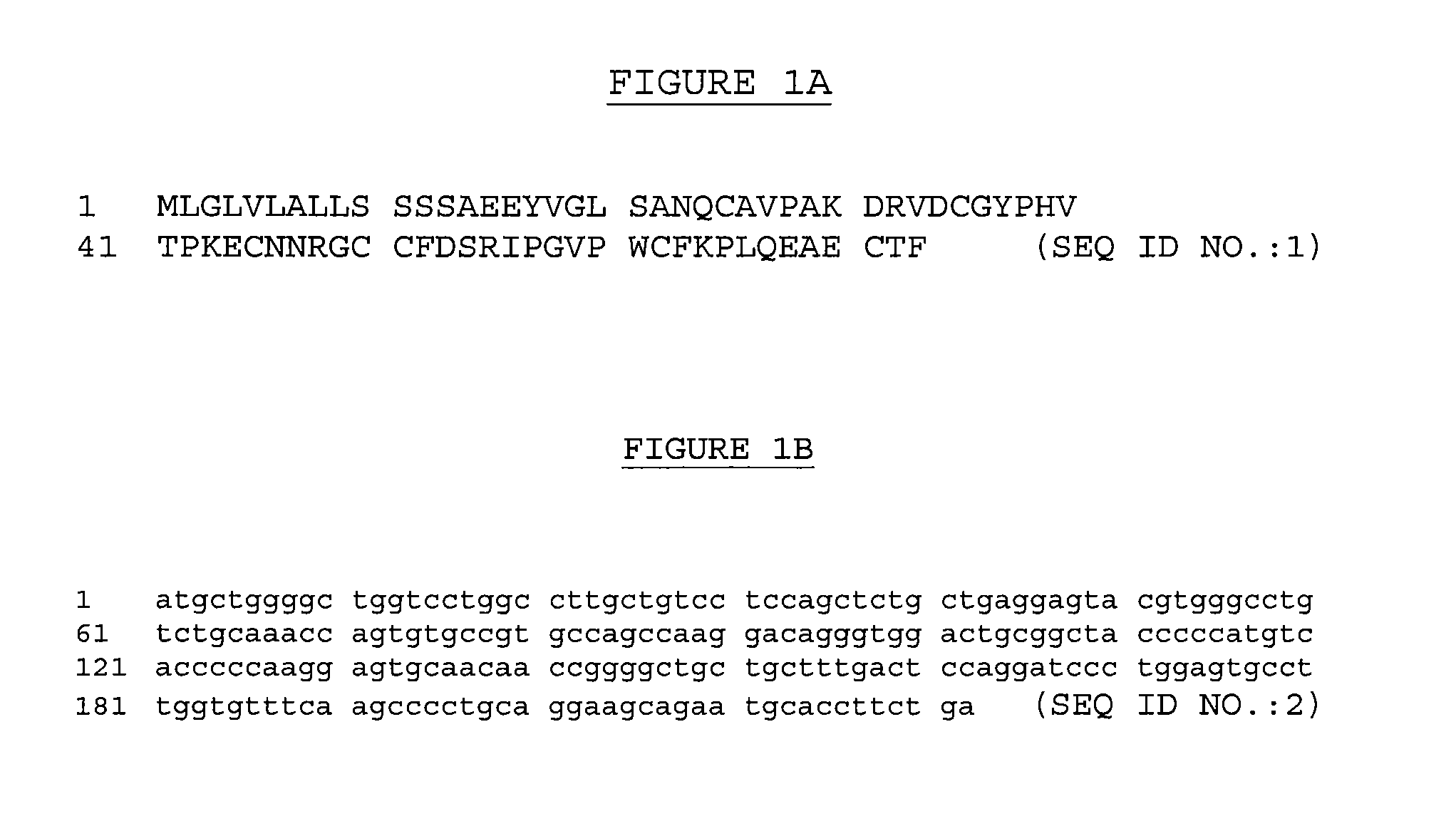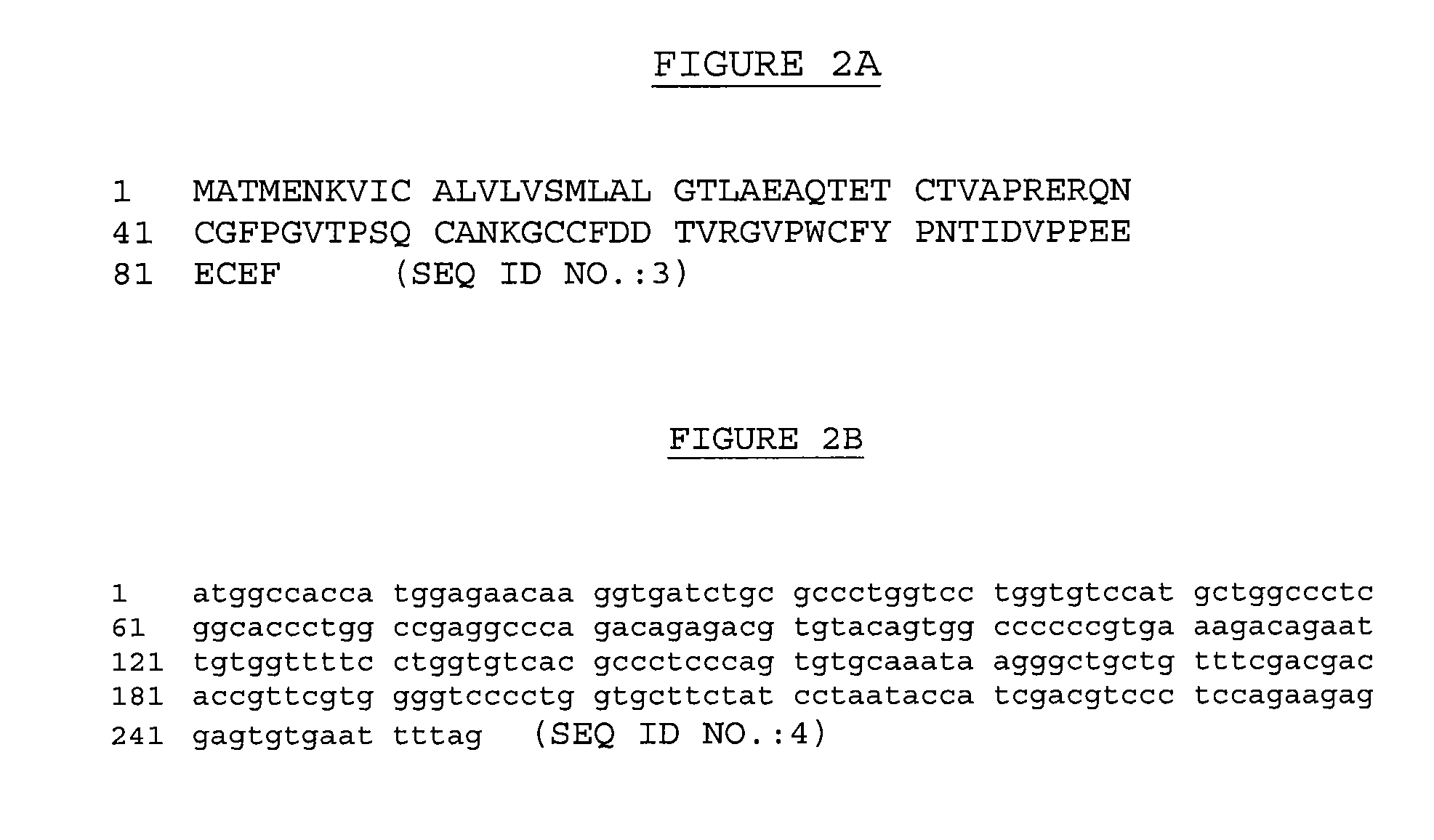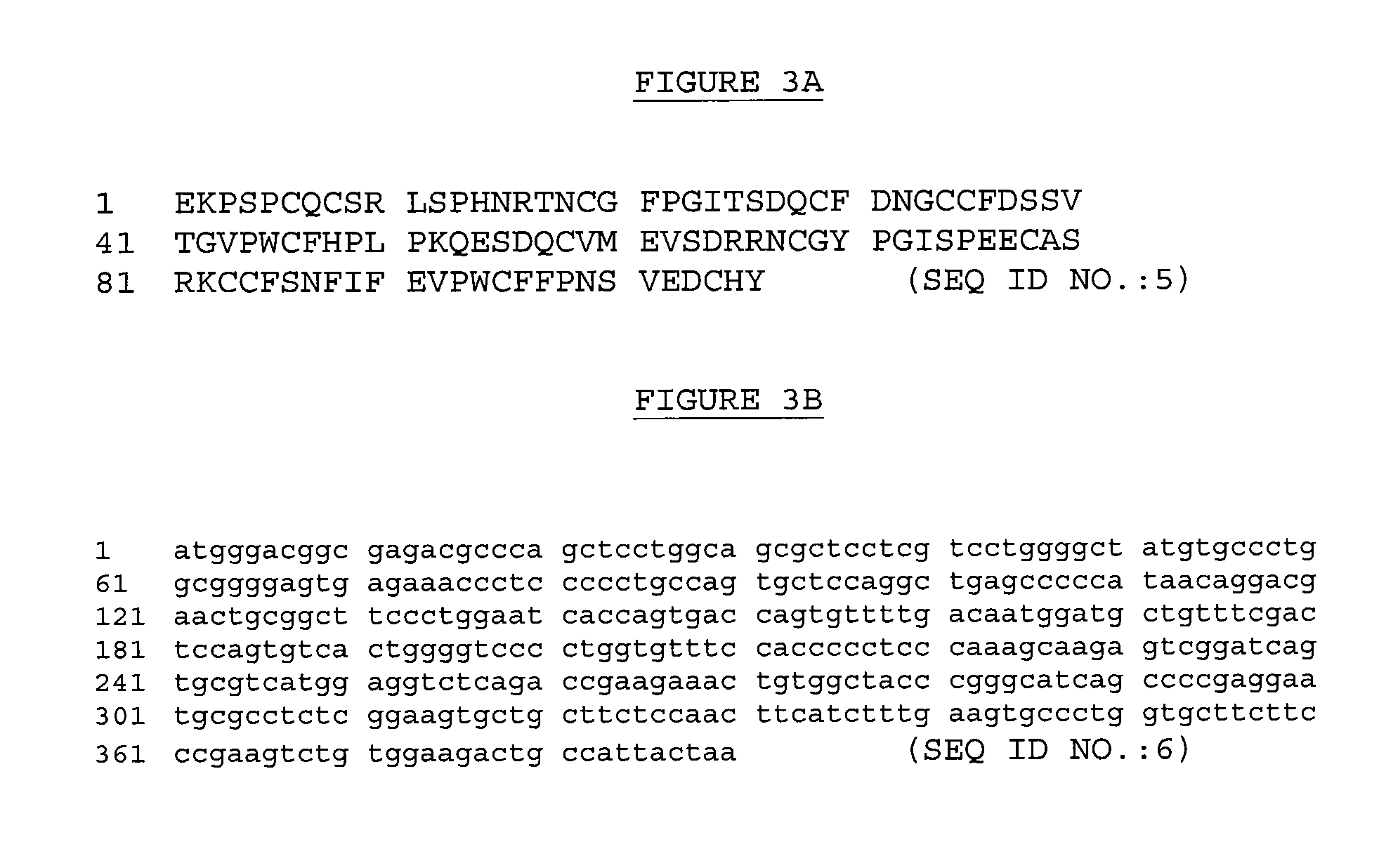Methods and compositions for treating lesions of the respiratory epithelium
- Summary
- Abstract
- Description
- Claims
- Application Information
AI Technical Summary
Benefits of technology
Problems solved by technology
Method used
Image
Examples
example 1
Treatment of Rhinitis due to Rhinovirus
[0075]The patient is administered a trefoil peptide-containing preparation beginning immediately after the onset of a head cold. The preparation contains a therapeutic dose of ITF15-73. The trefoil peptide can be administered as a nasal spray using standard formulating methods to deliver 100 microliters of a 50 mg / ml spray of trefoil peptide. The patient receives medication by self-administering the nasal spray every 12 hours for the next five consecutive days. Also, the trefoil peptide active material may be applied with the standard dose of a nasal decongestant spray (e.g. 0.05% oxymetazoline HCl).
example 2
Treatment of Allergic Rhinitis due to Grass Pollen
[0076]During hay fever season, the patient affected with allergic rhinitis is administered with antihistamines such as diphenhydramine, fexofenadine, cetirizine, or loratadine. Also, the patient is concurrently administered a nasal spray preparation containing a therapeutic dose of ITF15-73. This component, in one example, is a nasal spray using standard formulating methods to deliver a 5 mg / ml spray of ITF. Continuing for the subsequent five days, the patient receives medication by self-administered nasal spray every 12 hours or as needed. In severe cases, the ITF active material may further be applied with the standard dose of a nasal glucocorticoid spray (e.g., beclomethasone, fluticasone, mometasone, or triamcinolone).
example 3
Treatment of a Post Viral Prolonged Bronchospasm
[0077]In treatments for post-viral tracheo-bronchial epithelial disruption, the trefoil peptide containing material may be co-formulated with the standard dose of an inhaled salmeterol preparation, in a dry powder inhaler, an aerosol metered dose inhaler, or as a solution or a suspension in a ultrasonic or air-jet nebuliser. The treatment continues with the patient self-administering the medication every 12 hours for a period of at least 72 hours.
PUM
 Login to View More
Login to View More Abstract
Description
Claims
Application Information
 Login to View More
Login to View More - R&D
- Intellectual Property
- Life Sciences
- Materials
- Tech Scout
- Unparalleled Data Quality
- Higher Quality Content
- 60% Fewer Hallucinations
Browse by: Latest US Patents, China's latest patents, Technical Efficacy Thesaurus, Application Domain, Technology Topic, Popular Technical Reports.
© 2025 PatSnap. All rights reserved.Legal|Privacy policy|Modern Slavery Act Transparency Statement|Sitemap|About US| Contact US: help@patsnap.com



